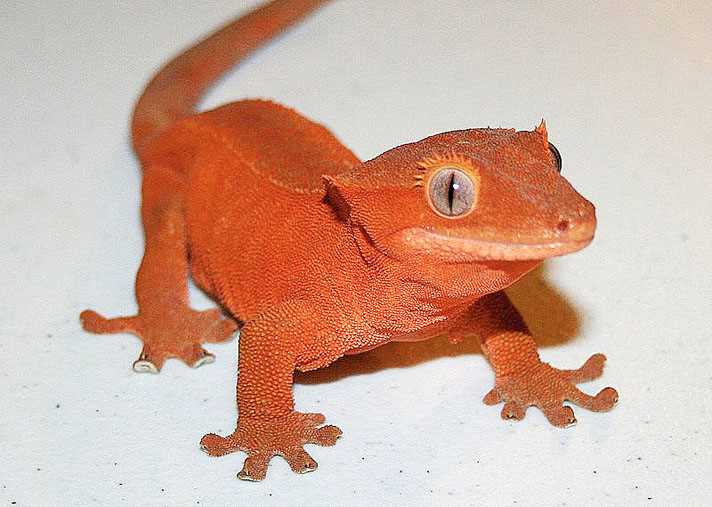In this article, we aim to provide a comprehensive overview of the garter snake population in Pennsylvania, including its habitat preferences, diet, reproductive behavior, and conservation status. This non-venomous snake is known for its slender body, distinctive stripes, and adaptability to various habitats. Introduction:
The garter snake (Thamnophis sirtalis) is a common species found throughout North America, including Pennsylvania.
Understanding these underlying reasons is crucial for providing appropriate care and enrichment for pet bearded dragons. Discussion:
The findings of this study suggest that glass scratching in bearded dragons can be attributed to various factors, including territorial behavior, environmental stimulation, escape attempts, and attention-seeking.
Glass scratching may serve as a form of exercise or a means to explore their environment. Environmental Stimulation:
Bearded dragons are naturally active creatures that require mental and physical stimulation. This behavior is more prevalent in captive dragons that have limited space for movement.
Findings:
The study revealed several interesting findings regarding the virtual consumption behavior of players engaging in frog eating within Minecraft. Firstly, it was observed that players who consumed frogs did so primarily for the purpose of sustenance. Frogs in Minecraft drop raw frog legs upon death, which can be cooked and eaten to restore health points. The participants often hunted frogs as a reliable food source, especially in the early stages of the game.
 While some players engage in frog eating solely for sustenance, others explore this activity for the thrill of discovery or choose to abstain from it altogether due to ethical considerations. Conclusion:
While some players engage in frog eating solely for sustenance, others explore this activity for the thrill of discovery or choose to abstain from it altogether due to ethical considerations. Conclusion:
The case study on Minecraft frog eating highlights the diverse virtual consumption behavior exhibited by players within the game. Understanding these virtual consumption behaviors can provide valuable insights into player motivations and preferences, contributing to the development of more immersive and engaging gaming experiences.
Conservation efforts should focus on preserving their habitats and raising awareness about their ecological significance. Conclusion:
The garter snake (Thamnophis sirtalis) is a fascinating reptile species found throughout Pennsylvania. If you have any questions regarding where and ways to utilize vitalfrog.com, you can call us at our own web-page. By doing so, we can ensure the continued presence of these remarkable snakes in Pennsylvania's natural landscapes for generations to come. Its adaptability to various habitats, diverse diet, unique reproductive behavior, and non-venomous nature make it an important component of the state's ecosystem.
Unlike many other snake species, garter snakes give birth to live young, typically ranging from 10 to 40 offspring. Reproductive Behavior:
Garter snakes in Pennsylvania mate in the spring, shortly after emerging from hibernation. Once mating is successful, females undergo a gestation period of approximately three months. Males engage in courtship behavior, such as slithering alongside females and flicking their tongues. These newborn snakes are fully independent and capable of hunting shortly after birth.
 Avoiding substrates like sand or gravel is vital as they can cause abrasions and lead to bacterial growth. Foot Care and Hygiene:
Avoiding substrates like sand or gravel is vital as they can cause abrasions and lead to bacterial growth. Foot Care and Hygiene:
Regular foot care and hygiene practices are essential to prevent infections and maintain healthy feet in bearded dragons. One crucial aspect is ensuring a clean enclosure with a suitable substrate, such as reptile carpet or paper towels, that does not cause abrasions or retain moisture.
Garter snakes are opportunistic hunters and use their keen sense of smell to locate prey. They capture their prey by striking and constricting, immobilizing it with their powerful jaws. They are also known to consume fish, earthworms, and invertebrates. Diet and Feeding Behavior:
Garter snakes are carnivorous, primarily feeding on a diet of small vertebrates, such as frogs, toads, salamanders, and small mammals.
 However, habitat loss due to urbanization and agricultural practices can impact their populations. It is essential to protect and preserve their natural habitats, including wetlands and grasslands, to ensure the long-term survival of garter snakes in the state. Additionally, educating the public about the importance of these snakes in controlling pest populations and their non-aggressive nature can help dispel common misconceptions and foster coexistence. Conservation Status:
However, habitat loss due to urbanization and agricultural practices can impact their populations. It is essential to protect and preserve their natural habitats, including wetlands and grasslands, to ensure the long-term survival of garter snakes in the state. Additionally, educating the public about the importance of these snakes in controlling pest populations and their non-aggressive nature can help dispel common misconceptions and foster coexistence. Conservation Status:
The garter snake population in Pennsylvania is generally considered stable and not currently threatened.
Scratching at the glass may be a display of dominance or territoriality, especially when they perceive their reflection as a rival. This behavior is more common during breeding seasons or when multiple dragons are housed in close proximity. Territorial Behavior:
Bearded dragons are known to be territorial animals.
As responsible owners, it is crucial to ensure the overall well-being of our scaly companions, including the health of their feet. This report aims to provide a comprehensive understanding of maintaining healthy bearded dragon feet, emphasizing the importance of proper care and potential foot-related issues. Introduction:
Bearded dragons (Pogona vitticeps) are popular reptilian pets known for their unique appearance and docile nature.
The garter snake (Thamnophis sirtalis) is a common species found throughout North America, including Pennsylvania.
Understanding these underlying reasons is crucial for providing appropriate care and enrichment for pet bearded dragons. Discussion:
The findings of this study suggest that glass scratching in bearded dragons can be attributed to various factors, including territorial behavior, environmental stimulation, escape attempts, and attention-seeking.
Glass scratching may serve as a form of exercise or a means to explore their environment. Environmental Stimulation:
Bearded dragons are naturally active creatures that require mental and physical stimulation. This behavior is more prevalent in captive dragons that have limited space for movement.
Findings:
The study revealed several interesting findings regarding the virtual consumption behavior of players engaging in frog eating within Minecraft. Firstly, it was observed that players who consumed frogs did so primarily for the purpose of sustenance. Frogs in Minecraft drop raw frog legs upon death, which can be cooked and eaten to restore health points. The participants often hunted frogs as a reliable food source, especially in the early stages of the game.
 While some players engage in frog eating solely for sustenance, others explore this activity for the thrill of discovery or choose to abstain from it altogether due to ethical considerations. Conclusion:
While some players engage in frog eating solely for sustenance, others explore this activity for the thrill of discovery or choose to abstain from it altogether due to ethical considerations. Conclusion:The case study on Minecraft frog eating highlights the diverse virtual consumption behavior exhibited by players within the game. Understanding these virtual consumption behaviors can provide valuable insights into player motivations and preferences, contributing to the development of more immersive and engaging gaming experiences.
Conservation efforts should focus on preserving their habitats and raising awareness about their ecological significance. Conclusion:
The garter snake (Thamnophis sirtalis) is a fascinating reptile species found throughout Pennsylvania. If you have any questions regarding where and ways to utilize vitalfrog.com, you can call us at our own web-page. By doing so, we can ensure the continued presence of these remarkable snakes in Pennsylvania's natural landscapes for generations to come. Its adaptability to various habitats, diverse diet, unique reproductive behavior, and non-venomous nature make it an important component of the state's ecosystem.
Unlike many other snake species, garter snakes give birth to live young, typically ranging from 10 to 40 offspring. Reproductive Behavior:
Garter snakes in Pennsylvania mate in the spring, shortly after emerging from hibernation. Once mating is successful, females undergo a gestation period of approximately three months. Males engage in courtship behavior, such as slithering alongside females and flicking their tongues. These newborn snakes are fully independent and capable of hunting shortly after birth.
 Avoiding substrates like sand or gravel is vital as they can cause abrasions and lead to bacterial growth. Foot Care and Hygiene:
Avoiding substrates like sand or gravel is vital as they can cause abrasions and lead to bacterial growth. Foot Care and Hygiene:Regular foot care and hygiene practices are essential to prevent infections and maintain healthy feet in bearded dragons. One crucial aspect is ensuring a clean enclosure with a suitable substrate, such as reptile carpet or paper towels, that does not cause abrasions or retain moisture.
Garter snakes are opportunistic hunters and use their keen sense of smell to locate prey. They capture their prey by striking and constricting, immobilizing it with their powerful jaws. They are also known to consume fish, earthworms, and invertebrates. Diet and Feeding Behavior:
Garter snakes are carnivorous, primarily feeding on a diet of small vertebrates, such as frogs, toads, salamanders, and small mammals.
 However, habitat loss due to urbanization and agricultural practices can impact their populations. It is essential to protect and preserve their natural habitats, including wetlands and grasslands, to ensure the long-term survival of garter snakes in the state. Additionally, educating the public about the importance of these snakes in controlling pest populations and their non-aggressive nature can help dispel common misconceptions and foster coexistence. Conservation Status:
However, habitat loss due to urbanization and agricultural practices can impact their populations. It is essential to protect and preserve their natural habitats, including wetlands and grasslands, to ensure the long-term survival of garter snakes in the state. Additionally, educating the public about the importance of these snakes in controlling pest populations and their non-aggressive nature can help dispel common misconceptions and foster coexistence. Conservation Status:The garter snake population in Pennsylvania is generally considered stable and not currently threatened.
Scratching at the glass may be a display of dominance or territoriality, especially when they perceive their reflection as a rival. This behavior is more common during breeding seasons or when multiple dragons are housed in close proximity. Territorial Behavior:
Bearded dragons are known to be territorial animals.
As responsible owners, it is crucial to ensure the overall well-being of our scaly companions, including the health of their feet. This report aims to provide a comprehensive understanding of maintaining healthy bearded dragon feet, emphasizing the importance of proper care and potential foot-related issues. Introduction:
Bearded dragons (Pogona vitticeps) are popular reptilian pets known for their unique appearance and docile nature.





 Characteristics Of Vitalfrog.com
Characteristics Of Vitalfrog.com